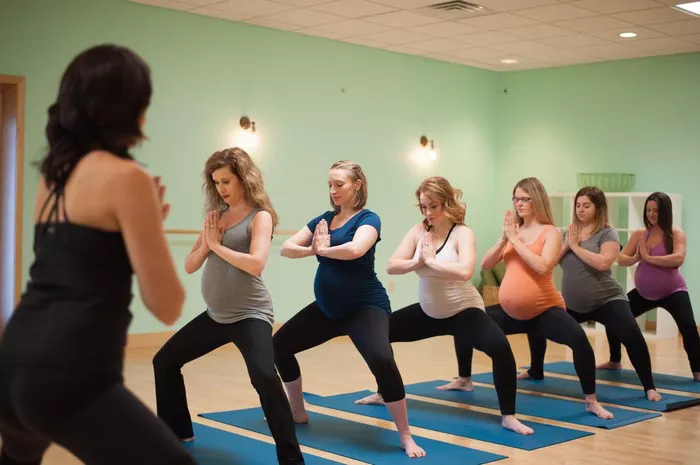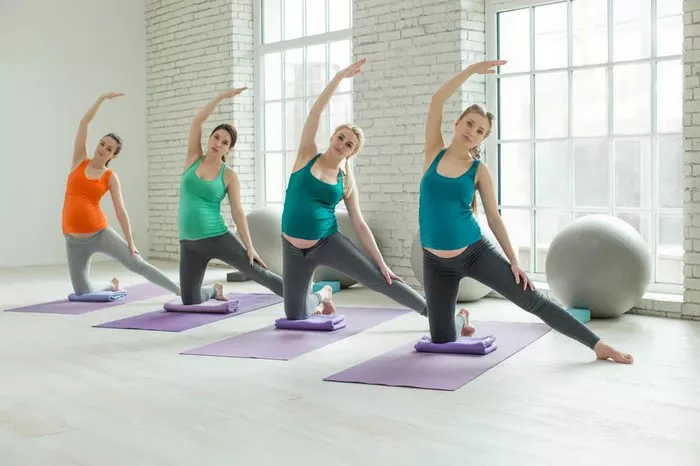Yoga has evolved over thousands of years, and today, one of the most dynamic and popular forms of yoga is Power Yoga. But what exactly is Power Yoga like, and how does it differ from other styles of yoga? Whether you are new to yoga or are looking to explore a more physically intense practice, understanding the fundamentals of Power Yoga can help you decide if it is the right fit for your body and mind.
In this article, we will delve into what Power Yoga is, what a typical class looks like, the benefits it offers, and how it compares to traditional yoga. By the end, you’ll have a clear understanding of how this modern and active style of yoga might become a valuable part of your fitness routine.
What Is Power Yoga?
Power Yoga is a modern version of vinyasa yoga that focuses on strength, flexibility, and endurance through dynamic movement and breath synchronization. It is often considered a more vigorous, faster-paced form of yoga, making it popular among people who want a challenging workout that also incorporates the mindfulness and breathwork of traditional yoga.
The roots of Power Yoga are tied to Ashtanga Yoga, a traditional form of yoga developed by Sri K. Pattabhi Jois in the early 20th century. Ashtanga is a physically demanding system that involves a set sequence of postures linked by breath, and Power Yoga draws heavily from this practice but without the rigid structure of Ashtanga. Power Yoga classes often vary in intensity, depending on the teacher and the studio, but they all emphasize strength-building and flowing movements.
What to Expect in a Power Yoga Class
If you’ve ever taken a traditional yoga class, you’ll notice some differences in Power Yoga. Power Yoga classes are typically more intense, faster-paced, and physically challenging. Here’s a breakdown of what to expect in a typical Power Yoga class:
1. Warm-Up
Like most yoga classes, a Power Yoga session begins with a brief warm-up to prepare the body for movement. This usually involves gentle stretches and breathing exercises to bring attention to the present moment. However, even during the warm-up, you may already begin to feel your muscles engage as you move through the poses with intention.
2. Flowing Sequences
The core of Power Yoga is the flowing sequence of poses, which are performed in a continuous, smooth motion. The emphasis is on linking breath with movement. For example, you may move from Downward Dog to Plank Pose, then to Cobra or Upward Dog, and back to Downward Dog, all while coordinating your breath to the movement. This type of flow, known as “vinyasa,” builds strength, endurance, and flexibility.
3. Strength-Building Postures
Throughout the class, you will encounter postures that target various muscle groups. Common poses in Power Yoga include Plank Pose, Warrior I and II, Chair Pose, and various balancing poses. These postures help build strength in the arms, legs, core, and back. Unlike restorative yoga, Power Yoga demands that you hold poses for longer periods, challenging your muscles to engage and build endurance.
4. Intensity Level
One of the defining characteristics of Power Yoga is its intensity. It is designed to be a full-body workout, so you can expect your heart rate to increase as you move through the sequences. This elevated heart rate can help improve cardiovascular health, increase calorie burn, and lead to improved muscle tone. For many people, Power Yoga is as much of a fitness routine as it is a spiritual practice.
5. Breath Control
Breathing is central to all forms of yoga, but in Power Yoga, it plays an even more crucial role. The breath is synchronized with each movement to help flow through the sequence while maintaining focus. Power Yoga classes often use Ujjayi breath, a type of controlled breathing that helps regulate the body’s heat and focus the mind. The breath is used to guide you through the sequence, and when performed properly, it ensures that you don’t overexert yourself.
6. Cool Down and Stretch
At the end of a Power Yoga session, there will usually be a cool-down period where the body is allowed to relax and stretch. During this time, you might perform slower, restorative poses such as Child’s Pose or Seated Forward Bend to allow the muscles to release tension. The class may end with a brief period of meditation or deep breathing to bring the body and mind into a calm state.
Who Is Power Yoga Suitable For?
Power Yoga can be adapted to suit a wide range of abilities, but it is particularly beneficial for individuals who:
Are looking for a more intense, physical workout that combines flexibility and strength.
Want a yoga class that moves at a faster pace than traditional Hatha or Vinyasa classes.
Enjoy challenging themselves both physically and mentally.
Have some experience with yoga or are in good general physical condition.
That being said, Power Yoga is also a great option for beginners who are physically active, as long as they are mindful of their limits and listen to their bodies. A good instructor will provide modifications for those who need them and encourage participants to pace themselves according to their own level of fitness.
What Are the Benefits of Power Yoga?
Power Yoga offers a wide range of physical, mental, and emotional benefits. Whether you’re looking for a fitness routine that offers both strength and flexibility, or you want to improve your focus and mindfulness, Power Yoga can help. Some of the key benefits include:
1. Improved Strength and Endurance
One of the primary goals of Power Yoga is to build strength. The practice targets all the major muscle groups, helping you develop muscle tone and endurance. The consistent practice of strength-based poses—such as Plank, Chaturanga, and Warrior Pose—helps build lean muscle mass and increases overall strength.
2. Enhanced Flexibility
In addition to strength, Power Yoga also improves flexibility. The dynamic flow of poses encourages lengthening of the muscles, and as you practice regularly, you may notice increased flexibility in areas such as the hips, shoulders, and hamstrings.
3. Cardiovascular Health
Unlike some other forms of yoga, Power Yoga is a great cardiovascular workout. The faster pace and the flowing movements help elevate your heart rate, improving cardiovascular endurance and burning calories. This makes Power Yoga an excellent choice for those looking to improve their overall fitness.
4. Stress Reduction and Mental Clarity
Like all forms of yoga, Power Yoga also has significant mental health benefits. The focus on breath control and mindfulness during the practice helps reduce stress and improve mental clarity. By concentrating on each movement and each breath, the mind is able to stay focused and present, helping to quiet the mind and reduce anxiety.
5. Weight Loss and Body Toning
Because Power Yoga is a full-body workout that includes strength-building poses, cardiovascular movement, and flexibility training, it can aid in weight loss and body toning. The intensity of the practice means you burn more calories during the session, and as you continue to build muscle, your metabolism increases, helping to burn fat over time.
6. Improved Balance and Coordination
As you practice more complex poses and transitions in Power Yoga, you also improve your sense of balance and coordination. This can have benefits in daily life, improving your posture and helping you maintain stability in physical activities outside of yoga.
7. Increased Mind-Body Connection
Power Yoga is not just about the physical body—it also focuses on the mind. By emphasizing breathwork and mindfulness, Power Yoga helps cultivate a stronger mind-body connection, promoting emotional stability and mental resilience.
See also: How Did CorePower Yoga Start?
How Does Power Yoga Compare to Other Yoga Styles?
While Power Yoga shares many similarities with other styles, it stands out due to its intensity and emphasis on strength-building. Here’s how it compares to some other popular yoga styles:
Power Yoga vs. Hatha Yoga
Hatha Yoga is a more gentle and slower-paced practice, often focused on holding postures and deep stretching. Power Yoga, in contrast, is more fast-paced, physically demanding, and focuses on building strength and stamina. While both styles can improve flexibility, Power Yoga is better suited for those looking for a vigorous workout.
Power Yoga vs. Vinyasa Yoga
Vinyasa Yoga is a broad category that encompasses a variety of yoga classes, many of which emphasize breath-coordinated movement in flowing sequences. Power Yoga is a specific form of Vinyasa Yoga that is typically more intense and focuses more on building strength. In other words, all Power Yoga is Vinyasa, but not all Vinyasa Yoga is Power Yoga.
Power Yoga vs. Ashtanga Yoga
Ashtanga Yoga involves a set series of postures performed in a specific sequence, and it is traditionally quite rigid in structure. Power Yoga, on the other hand, is more flexible and often less structured, allowing for more variation in the poses and sequencing. Both styles focus on building strength and flexibility, but Ashtanga has a more prescribed set of movements, while Power Yoga allows for more creativity and variation in the practice.
Conclusion
Power Yoga is an excellent choice for those who want a physical, high-energy workout that incorporates strength, flexibility, and cardiovascular health. It combines the benefits of traditional yoga with the intensity of a fitness workout, making it ideal for those looking to improve both their physical and mental well-being. Whether you’re an experienced yogi or a beginner, Power Yoga offers numerous benefits that can help you achieve greater strength, flexibility, and mindfulness.
If you’re looking for a yoga practice that challenges you, pushes your limits, and helps you build both mental and physical resilience, Power Yoga may be just the right practice for you.
Related topics:





















